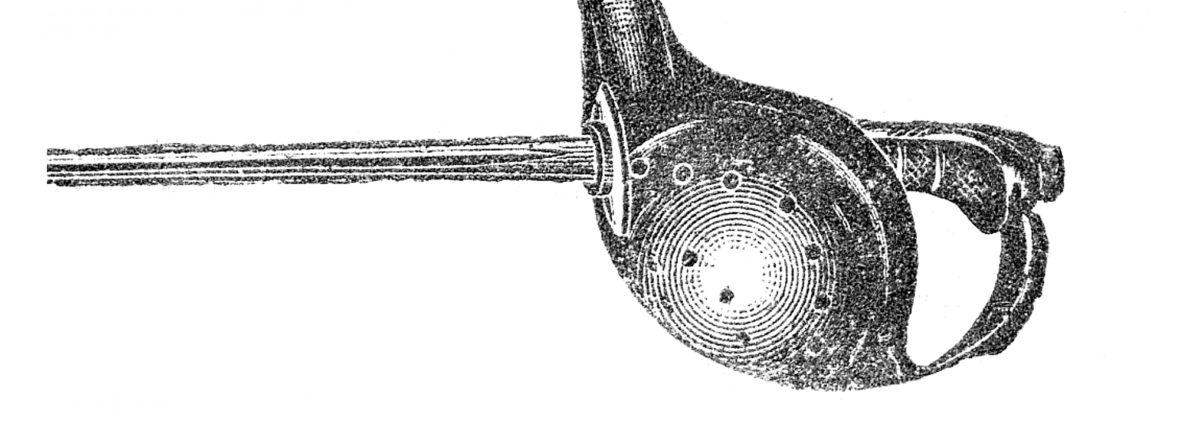Dueling Sabre Glossary
Dueling Sabre Blade
Blade: The blade of a sabre is made of a spring steel meaning it yields when bent. The blade has a tang, often threaded, which passes through the other weapon components holding the hilt together.
Point: The point is the uncovered end of a weapon’s blade. On dueling sabres the point would be sharp, though for training they’re blunted by either rolling the point or flattening it into a nail head.
Curve (Blade): The curve of a sabre blade refers to its upward bend with the cutting edge facing down.
Cant: A blade’s cant is the inclination of the tang away from the angle of the blade. Sabre blades are canted vertically but not side to side.
Shoulder: The junction between the blade and the tang that rests against the guard. This is also sometimes referred to as the heel.
Neck: The neck is the portion of the tang, often only the first one or two inches from the shoulder, that is made square. This square architecture is critical for a grip to fit securely and prevent rotation.
 Guard: Guards sit immediately behind the blade providing protection for the hand and act as a fulcrum for deflecting opposing weapons; guards act as the shield. There are many styles of guards that function the same, though with differing subtleties.
Guard: Guards sit immediately behind the blade providing protection for the hand and act as a fulcrum for deflecting opposing weapons; guards act as the shield. There are many styles of guards that function the same, though with differing subtleties.
Rosette: A rosette is a metal element in front of the guard that’s either decorative or structurally supportive. Rosettes may be held in place by either stacking on the tang like a guard or by riveting directly onto the guard.
Hilt: The hilt is the combination of components making up the manipulated and protective portions of the weapon including the guard, pad, grip & pommel.
Pad: A leather or cushioned cloth pad behind the guard designed to cushion the fingers if impacted against the guard.
Martingale: A martingale is a small leather or steel finger loop attached to the tang between the guard and grip to prevent disarms and emphasize cutting actions.
Grip: The grip is how a swordsperson manipulates the weapon. There are varieties of grip styles, shapes and materials depending on the school of fencing and individual preference. Grips are designed to be comfortable, but above all facilitate the manipulation of the weapon the way it was designed to handle.
Backstrap: The backstrap is the metal spine of a sabre grip that integrates the pommel, grip, and guard together.
Pommel: Sabre pommels function to secure the blade to the hilt components.
Tang Channel: The tang channel (or aperture; perforation) is the hole in all the hilt components through which the tang passes and secures with the pommel.

